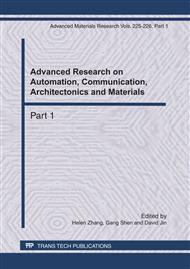p.609
p.614
p.619
p.623
p.628
p.632
p.637
p.642
p.646
Research on the Construction of Financial Accounting Information Systems
Abstract:
The rapid development of network technology and the increasing maturity of e-commerce technology have integrated the financial accounting information system, originally a single closed system of value stream, into a unified enterprise information management system of logistics and value stream. This paper presents suggestions on how to construct the financial accounting information system: exploring new management mode and implementing management reform; standardizing business processes and establishing a standardized management system; addressing the interface issues between various operation systems to achieve resource sharing; building new financial software systems to achieve real-time reporting of accounting information; establishing financial accounting information management systems to improve the accuracy and reliability of accounting information.
Info:
Periodical:
Pages:
628-631
Citation:
Online since:
April 2011
Authors:
Keywords:
Price:
Сopyright:
© 2011 Trans Tech Publications Ltd. All Rights Reserved
Share:
Citation:


